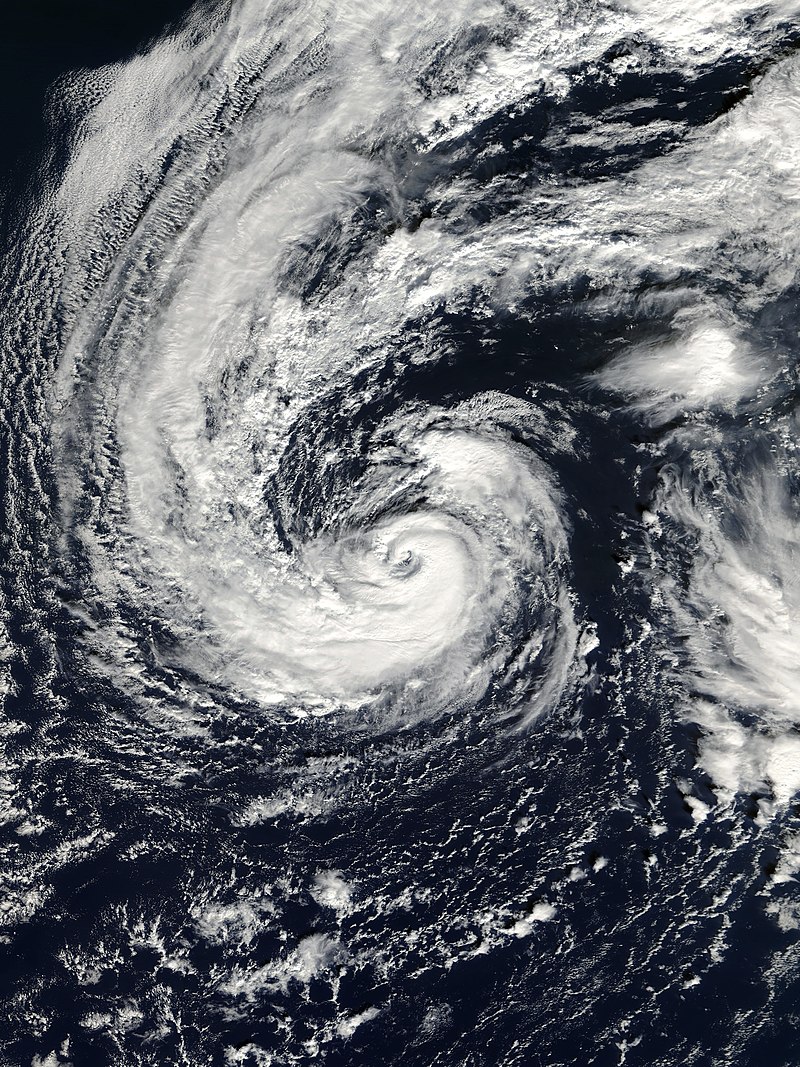This research article delves into the meteorological characteristics and impacts of Hurricane Olga, which emerged as a significant event during the 2001 Atlantic hurricane season. Of particular note is Olga’s distinction as the largest tropical cyclone by diameter of gale-force winds on record in the Atlantic at that time. This article provides a comprehensive analysis of Olga’s formation, development, path, and subsequent dissipation, along with the limited damages it caused. Additionally, it offers insights on preparedness measures that can be taken if another hurricane with similar characteristics threatens landfall in the affected area.
Introduction: Hurricane Olga, the fifteenth named storm and the final hurricane of the 2001 Atlantic hurricane season, originated as a subtropical cyclone on November 24. Over the course of that day, Olga acquired tropical characteristics and gradually meandered westward. By November 26, the system strengthened into a Category 1 hurricane, peaking with sustained winds of 90 mph (140 km/h). After reaching its maximum intensity, Olga turned southwestward, eventually weakening back into a tropical storm. On November 30, it further deteriorated into a tropical depression but managed to re-intensify to tropical storm intensity two days later. Finally, Olga dissipated as a tropical cyclone on December 4 east of the Bahamas. The storm’s effects were primarily limited to ships at sea, although it produced heavy rainfall across the Bahamas and Florida.
Impact and Damage Assessment: Fortunately, Hurricane Olga did not directly strike populated areas, minimizing the potential for extensive damage and loss of life. As a result, no fatalities or significant destruction on land were attributed to the storm. However, Olga’s remnants did produce considerable rainfall in the Bahamas and Florida, causing localized flooding and posing challenges for some coastal communities. The cleanup and recovery efforts following Olga’s passage primarily involved addressing infrastructure damage, clearing debris, and mitigating flood-related issues. The cost of cleaning and rebuilding was relatively low compared to more destructive hurricanes, as Olga’s impacts were generally less severe.
Preparedness Measures: While Hurricane Olga’s effects were relatively minor, it is crucial for individuals and communities to remain vigilant and prepared for any potential hurricanes. Some recommended actions to enhance preparedness include:
a) Staying informed: Regularly monitoring weather forecasts and official bulletins from local authorities helps individuals stay aware of any approaching storms, providing valuable time to prepare and take necessary precautions.
b) Developing an emergency plan: Establishing a detailed plan for evacuation, communication, and necessary supplies is essential. This includes identifying evacuation routes, creating a communication network with family and friends, and assembling an emergency kit containing essential items.
c) Securing property: Securing loose objects, reinforcing windows and doors, and trimming trees and shrubs can help minimize damage caused by high winds and flying debris.
d) Understanding flood risks: Familiarizing oneself with flood zones and taking appropriate measures, such as purchasing flood insurance, elevating valuables, and safeguarding important documents, is vital in flood-prone areas.
Interesting Fact: As a direct result of the 2001 hurricane season, including Hurricane Olga, meteorologists and climate scientists gained valuable insights into the behavior and characteristics of storms forming outside the typical Atlantic hurricane season. The occurrence of Olga in December highlighted the importance of remaining vigilant and prepared throughout the year, as hurricanes can develop and impact coastal areas even beyond the traditional hurricane season, which runs from June 1 to November 30.
In conclusion, Hurricane Olga of the 2001 Atlantic hurricane season stood out as a record-breaking cyclone, showcasing the largest diameter of gale-force winds in the Atlantic at that time. Despite limited impacts and damages, the storm served as a reminder of the need for continuous preparedness and vigilance in coastal regions. By understanding the characteristics and potential risks associated with hurricanes, communities can better protect themselves and minimize the impact of future storms.




Leave a Reply